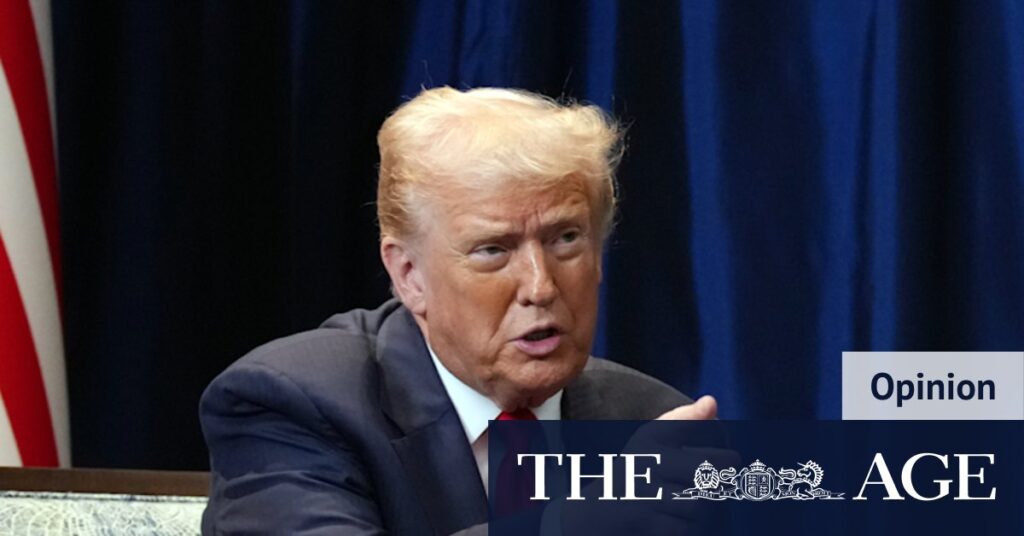
The judgment day for most of Donald Trump’s tariffs looms this week, with the US Supreme Court set to hear an appeal against a lower court’s ruling that they are illegal. The decision could have significant implications for the US economy and international trade relations.
Should the Supreme Court rule against the administration’s tariffs, the “Liberation Day” import levies of between 10 and 50 percent against all the countries the US trades with may need to be withdrawn. This could also affect trade and investment deals established using these tariffs as leverage. Furthermore, the $90 billion in revenue generated so far might have to be refunded.
The Legal Battle Over Tariffs
Trump could still impose tariffs, but he would need to use different legislation, which would involve extensive investigations and could not be enacted at the president’s whim. Alternatively, he could resort to another law that limits tariffs to 15 percent, applicable only to countries with substantial trade surpluses with the US, and sets a 150-day limit on the tariffs’ duration.
Trump used Section 232 of the Trade Expansion Act of 1962 for his sectoral tariffs on steel, aluminum, and cars, among other products. These tariffs have not been challenged. Last weekend, Trump described the Supreme Court hearing as “one of the most important cases in the history of our country” and warned of dire repercussions if the tariffs were struck down.
“If a president was not able to quickly and nimbly use the power of Tariffs, we would be defenseless, leading even to the ruination of our Nation,” Trump wrote on Truth Social.
Economic Implications and Political Ramifications
The administration’s lawyers argue that denying the president the authority to impose tariffs would “thrust America back to the brink of economic catastrophe.” They claim, “with tariffs, we are a rich nation; without tariffs, we are a poor nation.”
However, there are several issues with these statements. Firstly, the power to impose tariffs lies explicitly with Congress. Secondly, while the tariffs are substantial, the Committee for a Responsible Federal Budget estimates they would raise about $3 trillion over a decade. This is modest compared to a US federal government deficit of $1.8 trillion and rising.
America is one of the least trade-exposed economies, with total trade amounting to around 25 percent of its GDP. In a $30 trillion-plus economy, a few hundred billion dollars a year is almost immaterial.
Before the tariffs, there was no economic catastrophe. Since their imposition, the US economy has slowed, unemployment has risen, inflation has edged up, the manufacturing sector has shrunk, and investment has dried up. The tariffs have caused uncertainty and economic harm, with little influence on the nation’s wealth.
Historical Context and Future Prospects
Trump justified the tariffs by declaring a national security emergency due to America’s trade deficit and cited fentanyl use as a rationale for tariffs on Canada, Mexico, and China. The US has run trade deficits for the past 50 years, a period of increasing prosperity. There was no trade-deficit-driven economic emergency until Trump declared one.
The tariffs are effectively a tax on US companies and consumers, with importers paying duties when goods land in America. These costs are either absorbed by companies or passed on to consumers. The easiest way for Trump to fill the revenue gap, should the Supreme Court rule against him, would be to raise US tax rates by undoing tax cuts for the wealthy.
A court defeat would be embarrassing for Trump and his administration, given their treatment of America’s allies during tariff negotiations. US Treasury Secretary Scott Bessent warned that rejecting the tariffs could create a “dangerous diplomatic embarrassment” for the US, although it would primarily embarrass Trump and his administration.
Potential Outcomes and Broader Implications
The Supreme Court, with its majority of Republican-nominated judges, has generally been favorable to Trump, increasing executive power. It is possible the court could overturn the lower court’s ruling, granting the president the power to impose taxes, even though the US Constitution assigns this power to Congress.
If the court rules in favor of Trump, it would not only expand his tariff powers but also set a precedent for future presidents, regardless of party affiliation. This could significantly alter the balance of power between the executive and legislative branches concerning foreign policy and economic regulation.
The outcome of this case will be closely watched, as it could reshape US trade policy and have lasting effects on international relations and domestic economic strategy.







